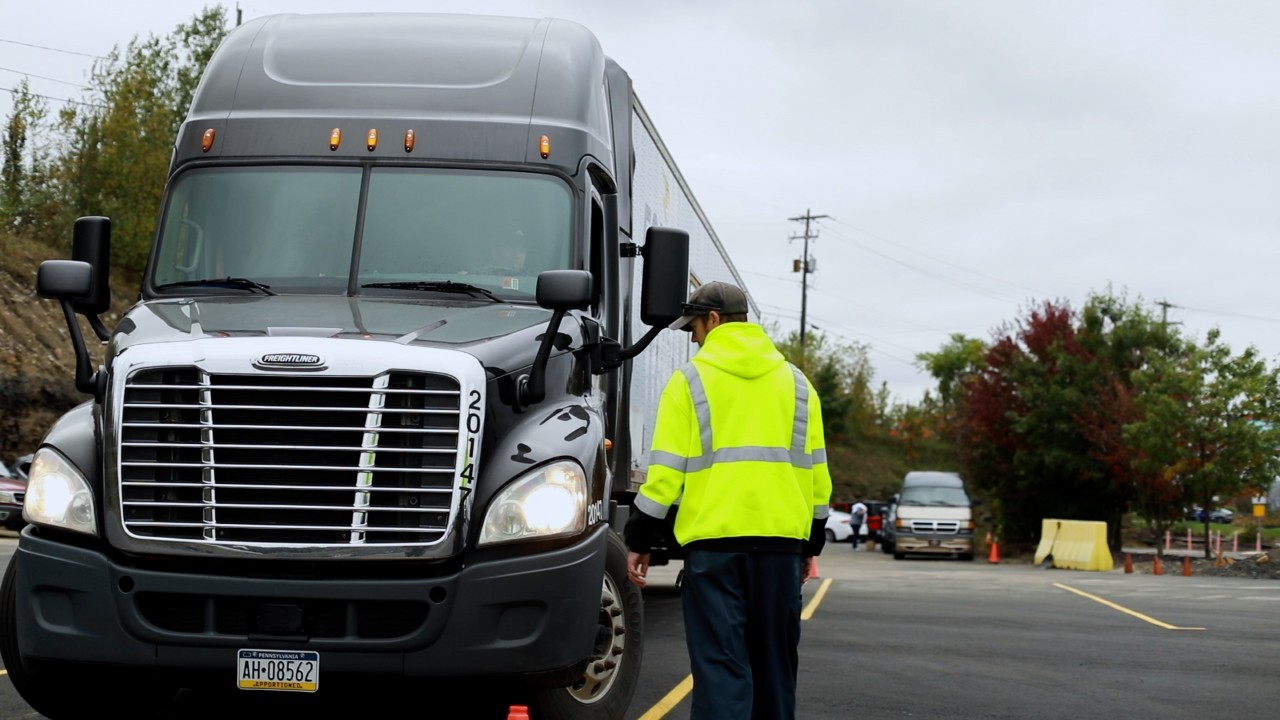What Is an Over-the-Road Truck Driver?
Commercial truck drivers transport goods across the country. Local truck drivers transport goods to businesses and stores in their area. Regional truck drivers commonly deliver food, mail, and packages in a specific region. Over-the-road truck drivers, on the other hand, cross state lines and international borders while hauling consumer goods, vehicles, heavy machinery, hazardous materials, and beyond.
Becoming an over-the-road (OTR) truck driver requires specific skills and knowledge. In addition, drivers need a specialized license, road skills, and an understanding of federal regulations. A commercial driving school can prepare prospective drivers for careers as OTR drivers.
What Does an Over-the-Road Truck Driver Do?
Over-the-road trucking, also known as long-haul trucking, covers long distances. While local truckers generally remain within a particular state, and regional truckers drive routes of less than 1,000 miles, long-haul truckers cross the country and even drive shipments across international borders.
OTR drivers bring specialized skills to the road. They know how to operate heavy trucks and navigate semi-trailers safely. Careers in long-distance commercial driving require a state-issued license and experience driving heavy trucks and trailers. Many employers prefer to hire OTR drivers with a diploma from a commercial driving school.
Work Environment for Over-the-Road Truck Drivers
Around 2.2 million heavy and tractor-trailer truck drivers worked in the United States in 2022, according to the U.S. Bureau of Labor Statistics (BLS). These drivers primarily work full-time, with most of their time spent driving alone. Due to the nature of the job, drivers often work irregular hours, including nights, weekends, and holidays.
Federal regulations govern how much over-the-road commercial drivers can work. Regulations limit drivers to no more than 11 consecutive hours of driving, with at least 10 hours off before returning to work. Drivers also cannot exceed 60 hours of driving in a week. Due to these regulations, drivers must keep detailed and accurate records of their driving hours.
Most over-the-road truck drivers work in truck transportation, while a smaller number work in wholesale trade, manufacturing, and construction. Some, known as owner-operators, operate as self-employed drivers. They buy or lease their trucks and may receive a share of shipping profits.
Over-the-Road Truck Driver Job Responsibilities
Long-haul truck drivers' job responsibilities include safely operating heavy trucks and tractor-trailers. These drivers must inspect their trailers to keep the truck running smoothly and ensure the cargo they are hauling is properly secured. When driving, OTR truckers must follow specific traffic laws that apply to heavy trucks.
In addition to driving long distances, OTR truck drivers coordinate with dispatchers to report incidents and mechanical problems. Some may also supervise the loading and unloading of freight.
Over-the-Road Truck Driver Education and Experience Requirements
Prospective commercial truck drivers generally attend professional truck driving schools to prepare for jobs. During these programs, learners take courses on interstate truck driving and federal commercial trucking regulations. These programs incorporate hands-on components where learners strengthen their road skills in real-life driving situations.
A commercial driving program prepares graduates for the commercial driver’s license exam. After obtaining this license, drivers often complete short-term on-the-job training.
Commercial Driver’s License
Long-haul truck drivers must hold a commercial driver’s license, also known as a CDL. In most states, this requires passing a driving test and a knowledge test that covers topics like air brakes, different types of commercial motor vehicles, and the transportation of hazardous materials.
After receiving a CDL, drivers must complete a physical exam every two years, pass random drug and alcohol tests, and maintain a clean driving record. Drivers must also keep their CDL current. The length of a CDL varies depending on the state.
OTR Truck Driver Skills
Operating a heavy truck or semi-trailer requires excellent driving skills. This includes hand-eye coordination, fast response times, and good hearing. For example, federal regulations state drivers must meet hearing standards or use hearing aids to improve their hearing. Similarly, commercial drivers must pass a vision test.
Physical health is also important for OTR truck drivers. Federal regulations bar people with particular medical conditions, such as epilepsy, from operating a long-haul truck.
In addition to physical abilities, heavy commercial truck drivers need strong problem-solving and organizational skills. They must be able to plan efficient routes, address issues that arise during transport, and manage their time well. The ability to focus for long hours is also a key job requirement.
Job Outlook for Over-the-Road Truck Drivers
Most freight transported in the United States travels in heavy and tractor-trailer trucks. This means the job outlook for over-the-road commercial truck drivers is strong. The field is projected to add over 240,000 jobs annually from 2022 to 2032, according to the BLS.
Becoming an over-the-road truck driver can mean a higher earning potential. OTR drivers typically earn more than local or regional drivers.
The states with the highest number of over-the-road truck drivers include Texas, California, Florida, Ohio, and Pennsylvania. The highest-paid long-haul truckers live in Nebraska, Washington, Alaska, New Jersey, and New York.
Complete Commercial Driving School at Fortis
Demand for over-the-road truck drivers is strong and growing. But commercial truck drivers need a CDL and specialized training. The Advanced Tractor Trailer Driving Training program at Fortis Institute teaches learners how to drive a semi-truck and pass the CDL test.
Gain advanced road skills, along with industry-relevant knowledge, in the commercial driving program at Fortis.
Learn more about our program today.
Recommended Readings
A Day in the Life of an Over-the-Road Driver
How Women Are Shaping the Future of Truck Driving
What Does the Trucker Shortage Mean for Trucking Students?

